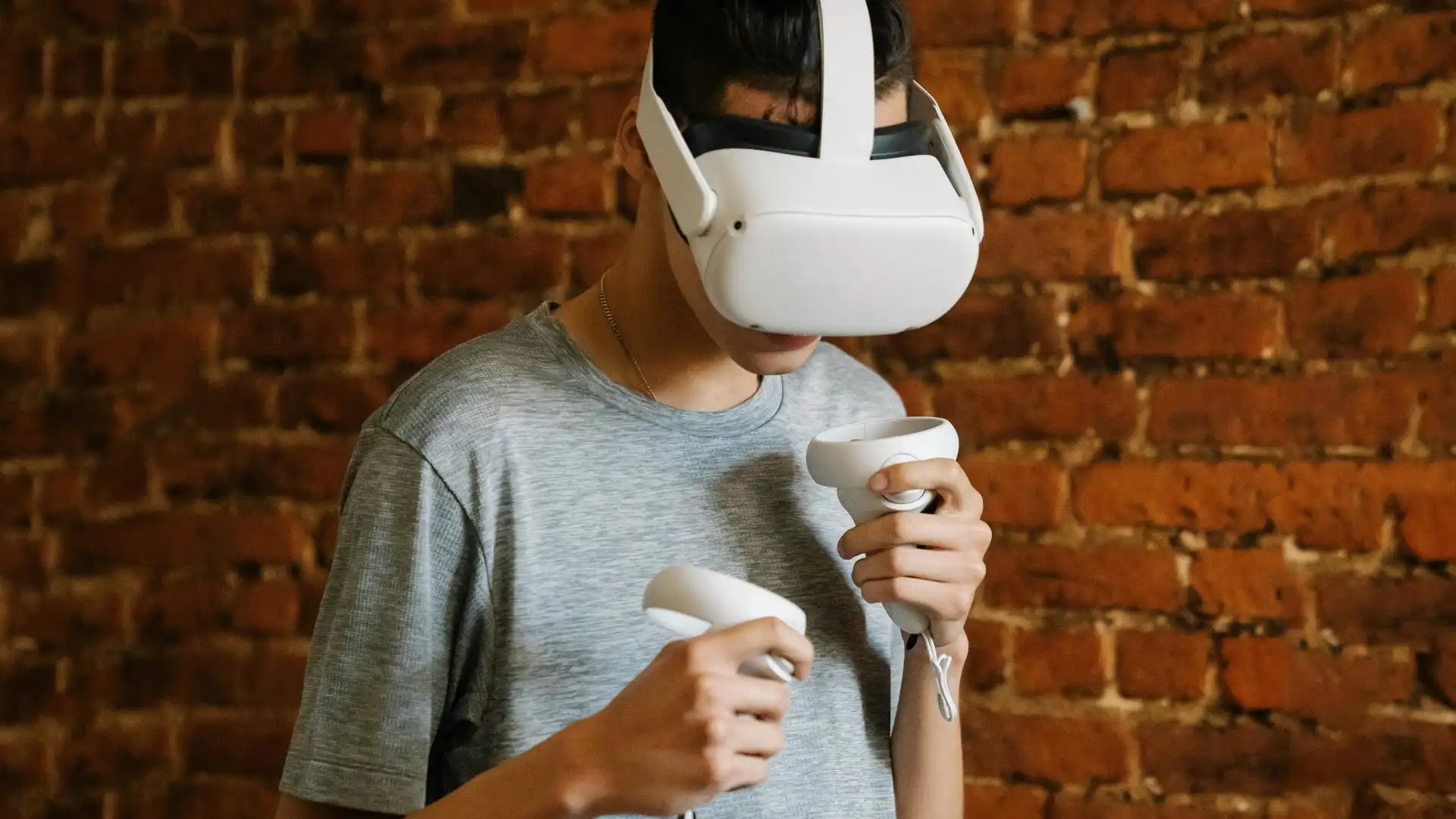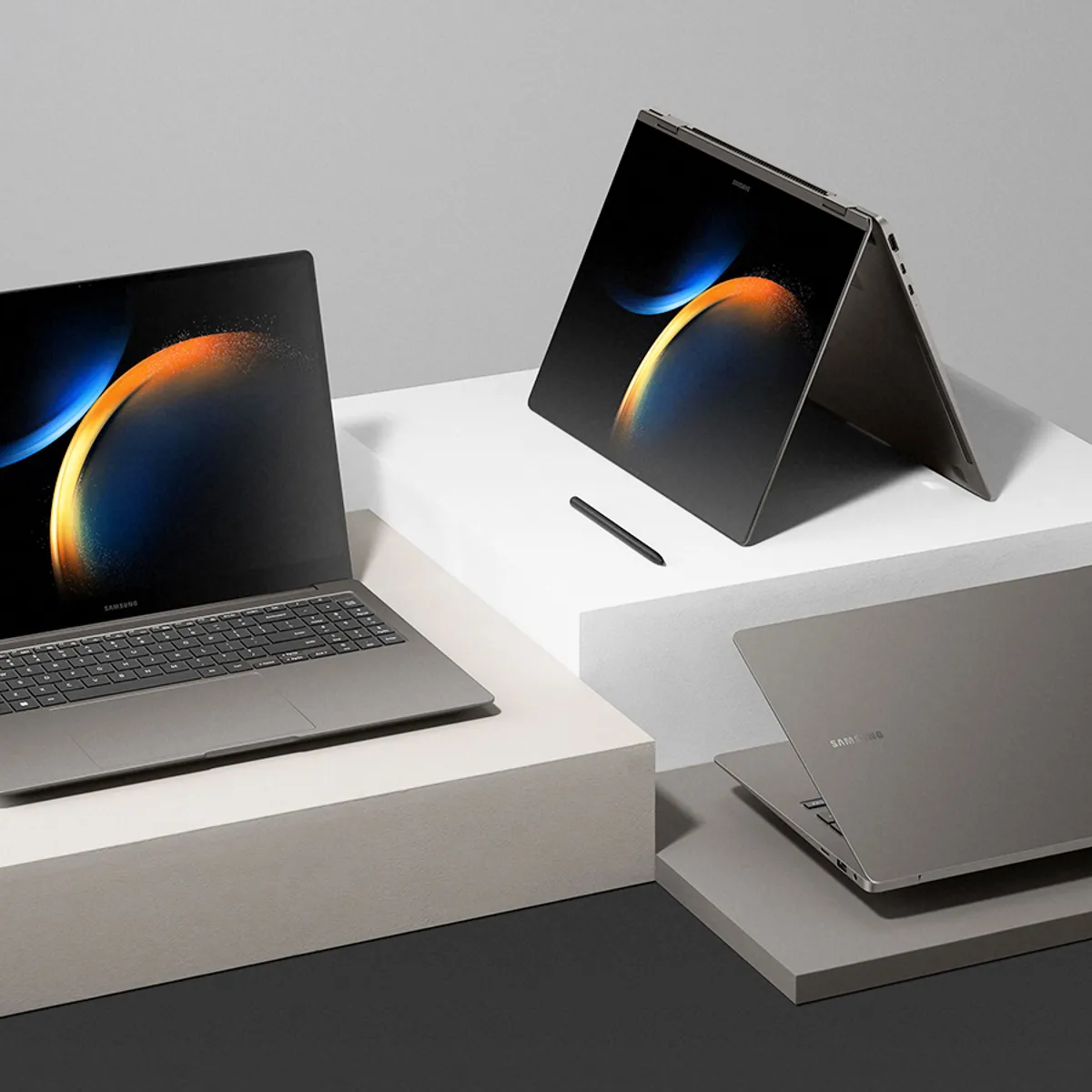Along with intense dieting, a game on the Meta Quest 2 helped me keep moving during my weight loss.
Two years ago I weighed 330 pounds. That’s just shy of 150 kilograms, if you’re not using Freedom Units. On August 7 my scale showed 229.4 pounds (104 kilos). While that’s by no means slim for a 5-foot-10 man, and I intend to lose more, I think it’s fair to say I’m now closer to “chunky” than obese. And a small but meaningful part of that weight loss is thanks to a VR game.
Since I know a lot of you are scanning this article and just want me to get to the point: It’s Ragnarock. That’s the VR game. You can buy it on Steam, the Meta Quest Store, or the PlayStation Store. There are demos to try out on all platforms. Now stick around if you want the details.
How I got here
I’m not going to lie to you. Though I enjoy it immensely, a virtual reality headset is not a magic device that will cause you to lose weight. The success of any weight loss plan depends on a diet of fewer calories than those you burn. No matter how much you exercise or build muscle, you can’t escape that thermodynamic requirement.
And I haven’t. I’ve been dieting pretty dramatically since the start of this year, and that’s where the lion’s share — or perhaps the rabbit’s share? — of my improvement has come from. As any nutritionist will tell you, “you can’t outrun a bad diet.”

Michael Crider/Foundry
But exercising can certainly contribute to that goal, and help you build muscle and endurance while you’re doing it. Unfortunately, I’m rather limited in what exercises I can do because of sciatica, a condition I’ve been carefully managing for over a decade. It’s why I’m such a big proponent of standing desks, incidentally, and it means that I can’t lift most weights, and I can’t do a lot of physically intense sports. I can’t even jog without risking debilitating back pain for days at a time.
And I’ve always struggled with exercising just for exercising’s sake. Sitting on a machine for an hour and going nowhere is something I find extremely tedious. So even those aerobic machines that don’t put any stress on my back — walking on a treadmill, rowing, stationary bikes — tend to leave me bored and discouraged.
Exercising without ‘exercising’
When I started working for PCWorld, I was invited to participate in a company-wide event called Walktober. Despite being almost entirely sedentary, my competitive nature was sparked, and I found myself invested in the outcome of my small team. Suddenly walking in circles for more than an hour a day wasn’t self-improvement. It was competition, hitting the same buttons in my brain as a competitive video game.

But I live in Pennsylvania, which is often dark, wet, and cold in October. So at the end of a long day, and with only a couple of hours to get in another 7,000 steps while the rain poured outside, I searched for an alternative. “Steps” here is used in a loose sense — the Walktober website would count any kind of exercise recorded by my fitness tracker into an approximation of steps, whether or not I was actually walking or running.
And so I looked to my Quest 2 headset. I’d bought it on sale earlier that year, more or less as a means of spicing up my Skyrim runs with virtual reality, and getting some hands-on experience so I could write about it. But I found that actually swinging my arms to stab Nordic zombies could wear me out after a while…and there were “exercise” apps all over the Meta store. They all seemed to have a bit of that “Wii workout game” feel to me, but there was one demo I tried that had me huffing and puffing.
If I could ‘gamify’ a workout, why not add a workout to a game?
If I could “gamify” a workout with just a little context added by my coworkers, why not add a workout context to a game that fits into the category? I wondered how many “steps” I could rack up, approximated by my arm motions and heart rate as measured by Fitbit, while playing in virtual reality. I set my Fitbit to track an Aerobics workout — the closest approximation I could get to just waving my arms around — and started up Ragnarock.
Like Guitar Hero and Whack-A-Mole in Valhalla
Ragnarock shares a lot of DNA with the console rhythm games of the 2000s — think Guitar Hero and Rock Band. It has that same basic setup, except you’re swinging motion controllers instead of pressing buttons on a plastic guitar. As the runes come down the screen, you beat the drums in time with the beat. The closer you are to the beat, the faster your longboat Vikings will row.
Imagine Guitar Hero, plus whack-a-mole, all set to Nordic heavy metal.
That’s about it as far as game mechanics go. If you can get a few dozen hits in a row without missing, you’ll charge up a power meter. Smash the shields on the side of the screen — or more accurately, to the side of the virtual space you’re inhabiting — and you’ll electrify your rowers with the lightning of the Norse gods to make them row even faster. (Don’t worry, they’re into it.) If you save up your charge and go farther without missing, you can give them a super-power lightning boost.
If trying to beat your best score (expressed in the distance your rowers go) gets old, you can go online and participate in multiplayer “races,” as every player gets their own boat and rows to the same song. There are dozens of songs in the base game, but you can get more via DLC (again, very similar to those old rhythm games) or load up custom-created songs made by the game’s enthusiastic community.

Michael Crider/Foundry
At first glance it doesn’t seem like swinging wireless controllers in a drum motion would burn a lot of calories. But at higher difficulty levels, each one of those songs might have a thousand individual notes to hit. That’s hundreds of swings for each arm, sometimes multiple times a second. I’m no drummer, but it certainly feels like the kind of workout you can get from an intense session, especially since the controllers are much heavier than a drumstick.
You can play it in a precise, technical way, but when you’re getting into the rhythm, you’ll find yourself jumping around and bobbing your head, doing your best hair metal rocker impression. At this point I should remind you to play VR in an empty room, or at least clear your path of any breakables.
The music selection is eclectic, if not exactly star-studded, but more or less all of it is fast-paced metal with a few classic rock-ish and punk songs in there. Metalheads might recognize bands like the Dwarven-themed Wind Rose or operatic fantasy metal Gloryhammer, with DLC from bands like the historical metal band Sabaton or a selection of nautical themes from Jonathan Young.
I’ve gotten a lot of mileage out of the custom song feature. It’s a bit of a pain to get the music and the mapping accompaniment from my PC to my Android-powered headset. I imagine that the process is much simpler on the Steam version. But with the help of community site RagnaCustoms.com, a catalog of user-submitted songs and mappings, I’ve gotten dozens of custom songs on there. Folkish sea shanties and metal remixes of classic Disney songs are highlights.
According to my Fitbit, an hour of Ragnarock at high levels can burn from 800 to 1,000 calories. I think that’s overly optimistic, but based on how much I’m sweating, it’s definitely a lot more intense than walking for two or three miles in the same timeframe. And that same exercise session will get me most of the way to a 10,000-step goal.
Using VR to get more active
Ragnarock isn’t perfect. The version made for the Android-powered Quest 2 headset is far less graphically impressive than the Steam version, though I still prefer it since I can play it without a cable and while traveling. I also think the actual music mapping can be inconsistent. At different parts of the same song you might be “drumming” along to the song’s melody, the singer’s lyrics, or the real drumline, and which one is active seems to be kind of random.
But all those little nit-picks just disappear when I get into it. I start beating like a madman, looking like Animal the Muppet if I’m trying to beat my best score on one of my favorite tracks. I appreciate the fact that my viking rowers always cheer when I hit the lightning shields…even if I’ve just missed a note and they don’t actually get struck by Thor’s lightning.
Sure, I could just walk on a treadmill. But playing a video game is more fun.
As I started to lose weight, I felt more emboldened to do more variable exercise, including lots of hiking and kayaking. At this point I walk uphill for a mile and a half to get to my neighborhood’s water aerobics class and back twice a week. I kayak for over 30 miles in a day on a regular basis. But Ragnarock remains an easy and fun way to get moving without leaving my house, especially handy when the weather’s bad. Sure, I could just walk on a treadmill. But playing a video game is more fun.
VR still has a long way to go
As much as I’ve enjoyed Ragnarock, I’m less bullish on VR gaming than I was two years ago. Facebook-Meta seems to be losing money hand over fist on the business that used to be Oculus, ever since everyone got a look at the “metaverse” and saw it for the unnecessary cash grab it was. Interest in the gaming side of things is still there, but there’s less excitement.
Valve’s newest game projects are conventional, non-VR titles, and even the developer of Ragnarock, WanaDev, is transitioning to a standard PC game for their next project. It’s been six months since Apple entered the market, and despite lots of initial buzz, the Vision Pro seems to have disappeared from the tech space almost immediately. Granted, starting a product line with something that costs as much as a used car probably isn’t going to spur adoption. But if Apple can’t spur excitement in VR, who can?

David Price / Foundry
The problems that VR had nearly a decade ago haven’t gone anywhere. It has a high barrier to entry for a largely single-player format that doesn’t appeal to everyone. It doesn’t help that VR gaming by its very nature requires a good bit of open space even if you’re stationary. Even people who can afford lots of living space aren’t ready to keep a room totally empty for a niche hobby.
The marketing that makes a Vision Pro or a Meta Quest look like a wearable Holodeck from Star Trek isn’t working now that most people have tried VR, or know someone who has. I think we’ll need something of an iPod moment for VR to get hold in a more meaningful way. A cheap, lightweight headset — perhaps something like the XReal Air, which could lean on a smartphone for processing power and battery — with a “killer app” that doesn’t yet exist.
Even so, I’ll be hanging on to my Quest for quite a while. Ragnarock isn’t a killer app, or a magical weight loss solution. But it’s by far the best reason I can give someone to pick up a VR headset. It’s just plain goofy fun that makes you sweat. And for me, that’s all I needed to kickstart something much bigger.




